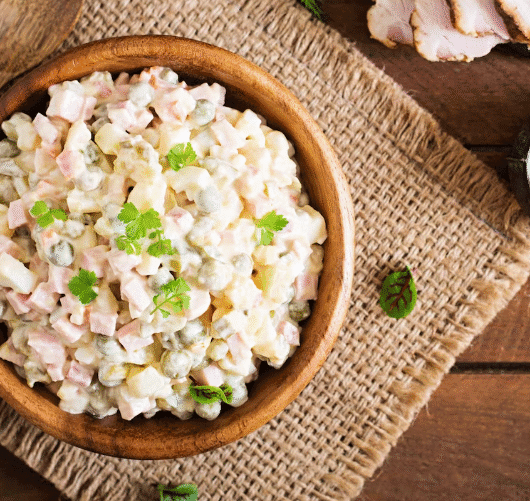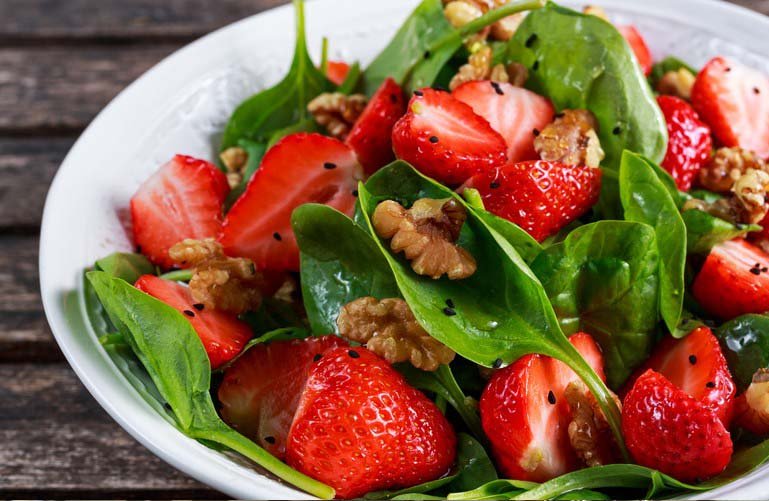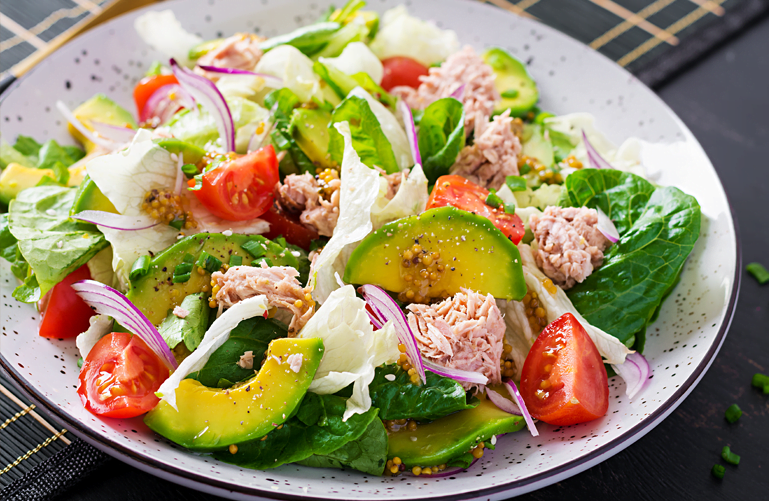Russian salad is a mixture of potatoes, carrots, peas, green beans and eggs in a mayonnaise and mustard base. This traditional recipe is easy to prepare and can be adapted to your preferences. Ideal as a side or main dish, this cold salad is refreshing, nutritious and perfect to enjoy at any time of the year.

Russian Salad and Health Benefits
Russian salad is a classic dish that has stood the test of time. This colorful and delicious combination of potatoes, carrots, peas, green beans and eggs in a mayonnaise and mustard base is not only a delight for the palate, but also offers a number of health benefits. In this essay, we will explore the key ingredients of Russian salad and how they contribute to healthy eating.
Nutritious vegetables
Russian salad is packed with nutrient-rich vegetables. Potatoes provide carbohydrates and vitamin C, while carrots offer beta-carotene and fiber. Peas and green beans add protein, fiber, and B vitamins. These ingredients help maintain a healthy immune system, promote digestion, and support overall health.
Source of vegetable proteins
The peas and green beans in Russian salad are excellent sources of plant protein. Protein is essential for cell repair and growth, and also helps maintain satiety. For those following a vegetarian diet or looking to reduce meat consumption, this salad provides a tasty and nutritious option.
healthy fatty acids
The mayonnaise used in Russian salad contains healthy fats from olive oil or sunflower oil. These fats are rich in monounsaturated fatty acids, which can help reduce LDL cholesterol (“bad” cholesterol) and promote cardiovascular health. However, it is recommended to moderate the amount of mayonnaise used to control calorie and fat intake.
High in fiber
Thanks to the plant ingredients, Russian salad is a good source of dietary fiber. Fiber promotes digestive health by improving bowel regularity and preventing constipation. It also helps control blood sugar levels and maintain feelings of satiety, which can be beneficial for weight control.
Conclusion
Russian salad is more than a delicious and popular dish in many cultures. It is a healthy option that combines a variety of nutritious vegetables and plant proteins. Being rich in fiber and low in saturated fat, this salad contributes to a balanced diet and can help maintain good overall health. So, the next time you want to enjoy a refreshing and nutritious dish, consider Russian salad as a tasty and beneficial option for your well-being.
History of the Russian Salad
Russian salad, also known as Russian salad or Olivier salad in some places, has its origins in 19th century Russia. It was created by Belgian chef Lucien Olivier, who worked at the Hermitage restaurant in Moscow in the 1860s. The original recipe was an exclusive creation and kept secret by Olivier.
Olivier's original salad consisted of a mixture of finely chopped ingredients such as potatoes, carrots, peas, pickles, hard-boiled eggs and poultry, all dressed with a special sauce based on mayonnaise, mustard, herbs and spices. The result was a luxurious and exquisite salad that became an instant hit among Moscow's wealthy diners.
However, after Lucien Olivier's death in 1883, his salad recipe was recreated and adapted by other chefs, and over time, it spread beyond the borders of Russia. The Russian salad became popular in Europe and Latin America, where each region adapted the recipe according to their tastes and availability of ingredients.
Today, Russian salad is a common dish in many parts of the world, especially Eastern Europe, Latin America and Spain, where it is served as a side dish at holiday meals, barbecues and family celebrations. The versatility of the recipe allows for variations based on available ingredients and personal preferences, but its essence as a fresh, creamy blend of vegetables remains the same.
Maybe you might like: Lechona Colombiana (stuffed pork)
Image credit: freepik



